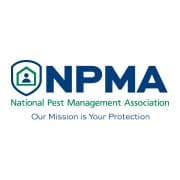PEST INSPECTIONS - WE FIND AND GET RID OF PESTS
Pest inspections are conducted by individuals licensed to perform inspections of building structures to determine damage or possibility of damage from insects, bugs, termites or dry rot conditions. Many people never give a second thought to pest inspections unless they are buying or selling a home, in which case, pest inspections become extremely important, including who pays for the pest inspection. Following are common concerns about pest inspections that can plague long-term homeowners and first-time home buyers alike:
Why You Should Hire a Professional
A guy dressed in clothing appropriate for crawling under your house (like a jumpsuit) will show up carrying a light, often attached to headgear, a camera to capture evidence photos and a probing device to poke structural wood members such as joists, sill plates, and studs.
The pest inspector is hunting for wood-boring invaders such as termites or powder post beetles, and insects such as cockroaches or carpenter ants, among other pests.
Want our pest control pros to call you?
Fill out the form below
It’s generally a good idea to hire a professional pest inspector because most people cannot tell the difference between mounds of dirt generated by earthworms in the soil or a swarm of termites leaving behind scraps from chewing wood. The piles are very similar to the untrained eye. However, most homeowners would never notice a pest invasion until it escalates to unruly proportions.
Pest inspectors will poke all around the exterior of the home, including the foundation, around the windows and the roofline, including rafters. If they find a soft spot, the pole will poke a hole into the wood, which often upsets some homeowners. We’ve actually watched sellers become so busy getting their pants in a twist that there are holes in the house now that they don’t stop to consider why the holes appeared.
After the inspector finishes with the pest inspections, the inspector will create a pest report, identifying the areas of concern and laying out the pest company’s recommendations to cure the problems, including repairing any decaying wood.
Sometimes the pest report will identify areas of further investigation such as inaccessible spots, which could involve, for example, ripping off tile from a shower wall or digging a trench to wiggle further under the house in a tight crawl space.
How Companies Exterminate the Pests
Gone are the days when tenting a home is the sole option for destroying pests that have invaded a home. Although effective, the chemicals used to tent a home are often toxic and unsafe, so owners have to move out when the tenting process is being performed. It involves just what you would expect, a huge circus-type tent is placed over the entire house and then filled with chemicals that kill pests.
Many of the products used by pest companies today are extremely effective without the tenting process, providing the areas are adequately discovered and identified. The chemicals are touted as environmentally safer and less harmful, although most parents are not eager to let small children crawl around the floors until the recommended period of time has passed.
To cure dry rot, generally, the decaying parts of the wood are removed. It could involve tearing out overhangs, parts of the roof extensions, window sills, support beams for patios, joists under the house or even wood siding.
There is often no requirement, for example, that a pest company removes an entire piece of wood siding if only the bottom is rotted. Sometimes they will cut just the bottom portion off, which looks terrible, so be sure to ask how much they are removing and replacing.
Pest companies are the subject of contention for those kinds of reasons. Ask your neighbors for referrals and check for a solid reputation. There can be cause for concern when the company doing the inspection also performs the work.



